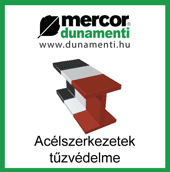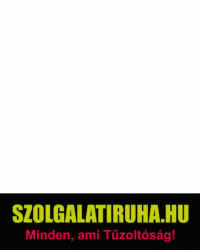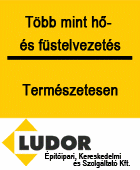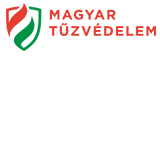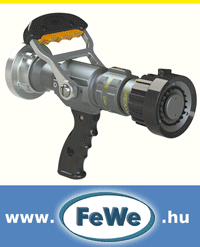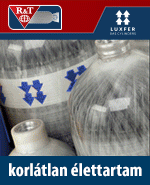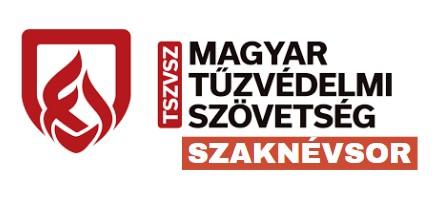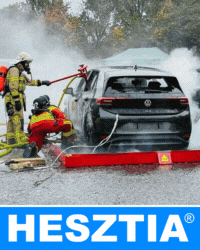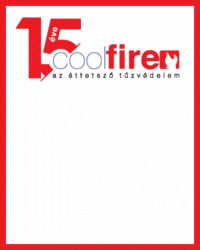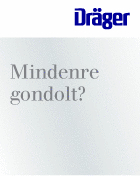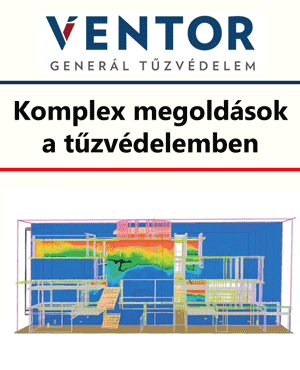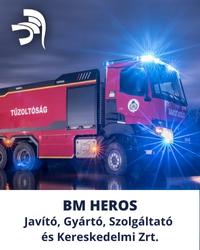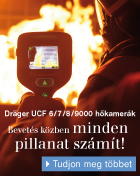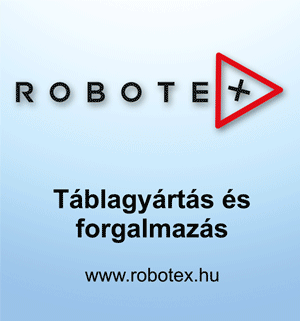|
Híreink Szakmai linkek Szaknévsor |
ISCFEDM – Section E, Safety and security0000. 00 00. 10:07 This page contains the presentations of Section E of the International Scientific Conference on Fire Engineering and Disaster Management 2021. (Az oldal a Tűzvédelmi Mérnöki és Katasztrófavédelmi Nemzetközi Tudományos Konferencia angol nyelvű előadásainak anyagait tartalmazza.) Table of contents for this section(Click the links below to jump to the desired presentation. Be advised: page load may be slow due to the embedded YouTube-videos. Please allow up to 1-2 minutes for the whole page to load.)
Subsection 1 Ambrusz, J-Kiss, A: Scientific research difficulties of post-earthquake rehabilitations Piwowarski, J.: Security environment – theoretical model in Polish security sciences
Subsection 2
Subsection 3 Berta, K: Involvement of animal rescue organizations in disasters Tandlich, R: A Brief Introduction to TIEMS International Certification - TQC Petretei D: Victim identification after the Hableány disaster
Subsection 4 M. Laban, V. Milanko, V. Radonjanin, S. Draganić: Knowledge FOr Resilent SoCiety
Subsection 1Kiss, A. – Ambrusz, J.: Scientific research difficulties of post-earthquake rehabilitationsAbstract: The elimination of the consequences of earthquakes fundamentally differentiates the research of the rehabilitation process depending on the damage that has occurred and the actual value of the rehabilitation. The estimated damage values of the recent earthquakes in Croatia, as well as the built environmental aspects of the actual rehabilitation and reconstruction, also influence the process of performance comparisons and best practice analyses. The authors of the study, in relation to their research areas, are looking for optimized procedures in relation to development opportunities. Key words: rehabilitation, damage value, earthquake, benchlearning
Piwowarski, J.: Security environment – theoretical model in Polish security sciencesAbstract: Security sciences in not exactly the same as security studies. The author deals with the social phenomenon of the security culture and with theory of security sciences. The goal of the security is to be more appreciated value in the area of the so-called risk societies. Researchers should have deal with threats in connection with the pressure of time and stress.
Hornyacsek, J., Kovács, G.: Application possibilities of Augmented Reality and Virtual Reality in the training of defense professionalsAsbtract: Today, we are hearing more and more about the challenges that await us in the next decade. Natural disasters, migration, the Fourth Industrial Revolution, the accelerated world, and everyday life, which are being digitised at a tremendous rate, create a changing environment in which resilience to dangers is a prerequisite for survival. The effectiveness of the defence activity depends to a large extent on the preparedness of the executive staff, the techniques and tools used. Recent technical developments, in particular the rise of digital tools, are also creating new opportunities in the defence sphere. The authors examined the traditional and digital types of defence tools used, examined the education and training and preparation systems that mediate defence knowledge. Research into new methods and forms of education that meet new challenges and target groups to be prepared. Within the digital devices group, the use of AR/VR devices offers new possibilities. In this presentation, the authors examine how AR/VR devices can be used in the defence sphere to support modern AR/VR digital devices, as well as modern training methods and decision support mechanisms. And the advantages and disadvantages of using these AR/VR devices. Keywords: Defense sphere, Augmented Reality, Virtual Reality, Digitalization
Serfőző,K-Pátzay Gy-Dobor J: Disaster management representation and summary of the most important elements, controllers, systems and devices required for the operational safety of a fictitious hazardous plantAbstract: Due to their activities (transportation, manufacturing, warehousing) and the substances they use (raw materials, indirect materials, finished products), plants handling dangerous substances pose constant risk to the constructed and natural environment, and particularly to air, soil and the surrounding population. During the operation of the plants, such risks need to be analyzed on an ongoing basis, as environmental hazard may increase as a result of substance releases, equipment malfunctions or incorrectly performed maintenance activities. Environmental impacts of hazardous facilities can be effectively reduced by using the various elements of the Safety Management System.
Subsection 2Barina, B-Dobor, J: Characterization, use and hazards of chemicals with dangerous properties that may occur in nuclear power plantsAbstract: The most significant part of the chemical use of a nuclear power plant is required for the preparation of additional feed water, which is required for the water-steam cycle, this technology requires hydrochloric acid, sodium hydroxide, ferrous sulphate, sulphuric acid, calcium hydroxide, and brine. The amount of chemicals used is influenced by the amount of make-up water required by the power units and the salinity of the Danube water. Additional chemicals are used for adjusting the chemical parameters of primary and secondary circuit water (ammonium hydroxide, hydrazine), for preservation during unit downtimes (acetic acid, rofamine), and for the regeneration of primary and secondary circuit ion exchange resins (nitric acid, sodium hydroxide, potassium hydroxide). There are specific reasons for the day-to-day use of chemicals with hazardous properties in a nuclear power plant, they are essential. Working with these materials requires serious preparation and attention. There are Mobile Laboratories for Disaster Management in every county of Hungary, which provide effective support at salving complex damage event’s. The continuous development of the primary intervention team’s is a serious challenge. The aim of the authors is to further research this topic and report on its results in publications!
Kiss, N-Dobor, J: Summary, characterization, potential hazards of radioactive isotopes, which are most often used in industry and healthcareThe purpose of the poster was to give a short professional presentation of the most commonly used radioactive isotopes. Its two largest users are healthcare and industry. It can be somewhat contradictory that these radioactive isotopes can cause extremely severe damage to the human body without control. However, they are practically indispensable for various processes nowadays. In Hungary, due to strict regulations, damage events related to radioactive isotopes are relatively rare. The use of radioactive isotopes has been ongoing in most countries on earth since the early decades of the 1900s. The number of radioactive isotopes is approximately above 2,000, a significant part of which can be characterized for practical use. An additional aim of the authors is to research this topic. Case study of disaster management in some case studies of some typical European damage events in order to learn lessons. In Hungary, the Seven Disaster Management Radiation Detection Units carry out the detection and assistance in response, thus reducing the escalation of the event and its negative impact on the population.
Kiss, A-Varga, O-Bekő, L: Detection of post-earthquake building damages in Zagreb based on Sentinel-1 radar dataAbstract: On this poster we summarize our GIS analysis results in connection with the earthquake in Zagreb in 2020. According to Markusic – Herak (1999) the Zagreb epicenter area is the most active one in the continental part of Croatia. The return period of a magnitude 6 earthquake is expected to be 150 years (Lokmer et al, 2002). Most of the earthquake damage in Zagreb was suffered by the housing sector (64%), followed by the culture and cultural heritage sector, including historical government buildings (13%), education (10%), health (8%), and business (5%). As a response, the Croatian Government activated a Copernicus task to support the damage assessment process and the monitoring process of building recovery. By this analogy, we tried to detect the building damages in the area of Zagreb’s city centre, using free satellite radar (Sentinel-1) data to testing its applicability.
Patai G- Rácz S: Accidents in case of prison transport at penal institutions from the perspective of firefightersAbstract: The increase in the number of vehicles in Hungary also attracts the increase of the related accidents. Fire departments are responsible for the elimination of these accidents. Firefighters need to be prepared for more effective and safer intervention, which must be constantly extended in line with technical progress. In addition to the technical progress, special situations can also be a problem. Accidents involving prison transport have a higher safety risk to the firefighters that the other road accidents. The quick, efficient and safe elimination of accidents requires proper preparation of the interveners, so the expansion of their theoretical and practical knowledge, and the development of their methodology is also important.
Subsection 3Berta, K: Involvement of animal rescue organizations in disastersAbsract: It is a social need to protect animals in the XXI. Century. In my research, I examine the relationship between civil animal rescuers and Disaster Management. Animal rescue is a technical rescue, so it is a duty of Disaster Management. Act No. CXXVIII. of 2011 allow the Rescue Manager to involve voluntary organizations in disasters, and to consider rescuing animals, when the absence of intervention causes the death of the animals. My experience in this direction shows, the animal rescue organizations have such a specialized knowledge and tools, that the integration of these organizations in to the education would be timely, all so in the rescue and alarm order. I present and prove through my own experiences in such cases.
I. Gabrielawicz, P. Krupa, P. Pantya: Safety management in terms of the level of safety culture in uniformed servicesAbstract: The presentation describes the results of a research on safety climate level in an Army Unit located on the territory of Poland. The research has been carried out with the use of author’s questionnaire to measure safety climate level. The results are presented by the means of Safety Culture Grid and there have been determined safety level indicators in various companies. The questions in the questionnaire are characterized by firm connection to designate of high safety culture. The results of the survey can be used to diagnose safety state in the context of human behaviour. Detailed analysis of the results allows to pinpoint weak and strong aspects of work safety. This enables one to undertake preventive and (or) repair actions adjusted to specific areas and worker groups.
Tandlich, R: A Brief Introduction to TIEMS International Certification - TQCAbstract: With an increasing number of disasters worldwide, resulting in more international collaboration and support to disaster stricken areas, the need for the more education and training in the international emergency and disaster management seems evident. TIEMS believes that it is important to raise the awareness of the competencies needed in emergency and disaster management, and to support those participating in these activities and operations in acquiring those competencies. This is TIEMS motivation for launching.
Petretei D: Victim identification after the Hableány disasterIn 05. 29. 2019., Budapest, Hungary, the Hableany, a Moskvich-class sightseeing cruise was collided from behind by a twenty-five-times bigger long ship, MV Viking Sigyn. The Hableany (a Hungarian word for Mermaid) capsized and sank in seven seconds. The sightseeing cruise had 35 South Korean citizen tourists as passengers and 2 Hungarian crew members. Seven people were rescued some minutes after the accident and eight dead bodies were found till the morning. In the next weeks, all but one body were found, one South Korean female passenger is still missing.
Subsection 4M. Laban, V. Milanko, V. Radonjanin, S. Draganić: Knowledge FOr Resilent SoCietyAbstract: In recent years the number and severity of natural and man-made disasters, as well as fires, has significantly increased. Education in Disaster Risk Management and Fire Safety field in Western Balkan countries should provide national highly skilled professional resources and regional capacity for resilient society. The aim was to build regional-based disaster preparedness and a culture of safety and resilience at all levels according to EU Integration Strategies and National relevant strategies in Albania, Bosnia and Herzegovina and Serbia. Project Knowledge FOr Resilient society – K-FORCE was selected for funding under ERASMUS+ programme Capacity Building in Higher Education – EAC/A04/2015. The paper presents the project results.
S. Shariphanov, T. Shahuov, Assan Zhaulybayev: The composition of the human capacity flow and Mosque for safety assessment of escapeL. Manga, L. KÁTAI-URBÁN, J. Solymosi: Radiation protection devices for nuclear emergency preparednessAbstract: In the event of a nuclear accident, the availability of radiation protection data is crucial. These data influence interventions, thus protecting the environment and the population. There are several methods available today. There may be different considerations when choosing these methods. Consideration is speed, accuracy, safety or a combination of these. The importance of these is supported by previous accidents such as Chernobyl or Fukushima. Had these methods been available at a given place and time, the damage to the environment and the population could presumably have been reduced. These methods are described below. With a rational combination of these methods, a possible accident situation can be successfully mitigated or eliminated. Keywords: nuclear accident, radiation protection, detection methods, radiation measuring devices, protection of the population and the environment
Ezt a hírt eddig 1258 látogató olvasta. |

